Categories
- Argentina
- Chile
- Antarctica
- Easter Island
- Falklands (Malvinas)
- Bolivia
- Peru
- Uruguay
- Paraguay
- Brazil
- Venezuela
- Colombia
- Ecuador
- Galapagos
- Panama
- Costa Rica
- Cuba
- Nicaragua
- Honduras
- El Salvador
- Guatemala
- Belize
- Mexico
- Latin American Xmas
Pages
- Street Art of Buenos Aires
- A week in Buenos Aires
- The Jesuit Missions in South America
- Contact Us
- Map of Central America
- First week in Latin America – October 2009
- Home Page
- Map of South America
Archives
- October 2011 (3)
- September 2011 (9)
- August 2011 (10)
- July 2011 (7)
- June 2011 (6)
- May 2011 (11)
- April 2011 (10)
- March 2011 (4)
- February 2011 (5)
- January 2011 (6)
- December 2010 (6)
- November 2010 (4)
- October 2010 (8)
- September 2010 (5)
- August 2010 (7)
- July 2010 (5)
- June 2010 (6)
- May 2010 (6)
- April 2010 (7)
- March 2010 (6)
- February 2010 (9)
- January 2010 (4)
- December 2009 (8)
- November 2009 (5)
- October 2009 (2)
Mérida
29th June 2011
In the quaint colonial town of Izamal [7], one of México´s Pueblos Mágicos, all the central buildings are painted in egg yolk yellow. Towering above everything else is the Franciscan church and convent, built on top and out of a Mayan pyramid. The Spanish monk Fray Diego de Landa who founded the Monastery later burnt all the Maya writings – lost forever (only 4 books remain). There are various Maya pyramids scattered about town, even the remains of one in our hotel´s garden.
.
When Francisco de Montejo and his Conquistadores arrived at the Maya city of T’ho in 1542, the white limestone covered buildings reminded them of the Roman city of Mérida [8] back in Spain. They renamed the oldest continually occupied city in the Americas and then proceeded to dismantle it, using the stone for the construction of churches and public buildings. We got there on a wet and windy day. Thoroughly soaked, we set out to explore the colonial architecture. The rain had eased the next day as we bussed and hour and a half out to Uxmal, one of the best restored Mayan sites with magnificent examples of Puuc construction – buildings beautifully decorated with carefully cut stones, often featuring the God of Rain, Chac.
.
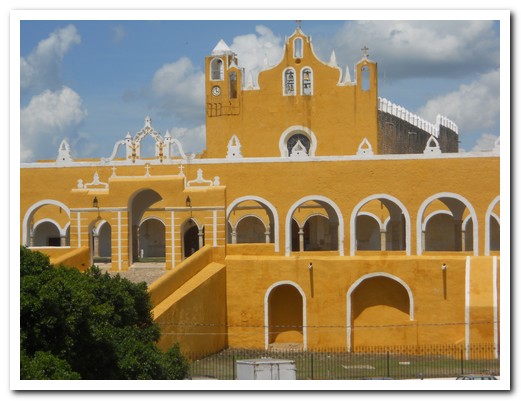
The view from our hotel balcony - the Monastery in Izamal, the largest in the Americas
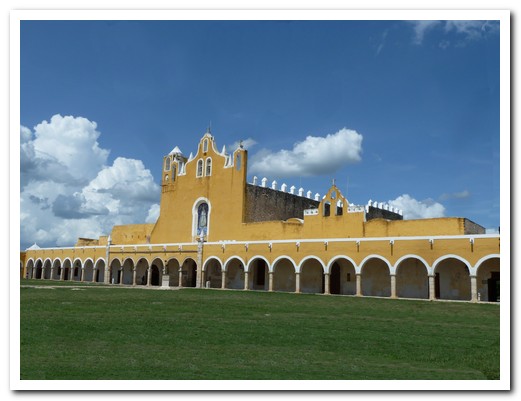
The largest courtyard outside of St Peters (Rome)
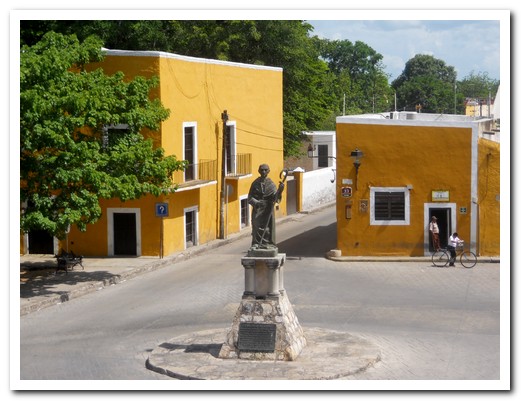
Fray Diego de Landa, builder of the Monastery, burner of the Mayan books, Bishop of Yucatán
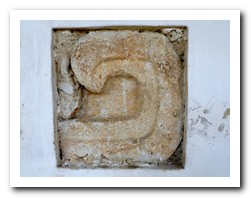 |
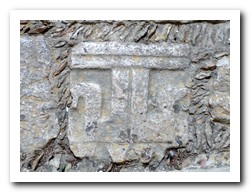 |
| Two of the stones taken from a Mayan temple used in the Monastery |
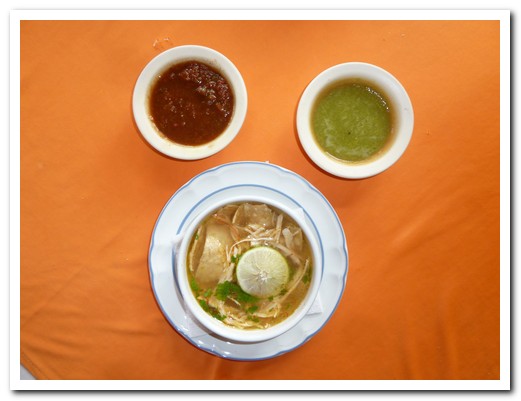
Sopa de Lima - broth of limes, shredded turkey & tortillas (add tomato or chilli sauce)
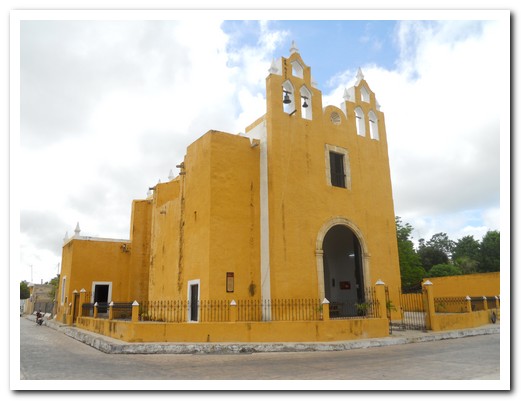
A 16 th century church in the typical very plain Franciscan style
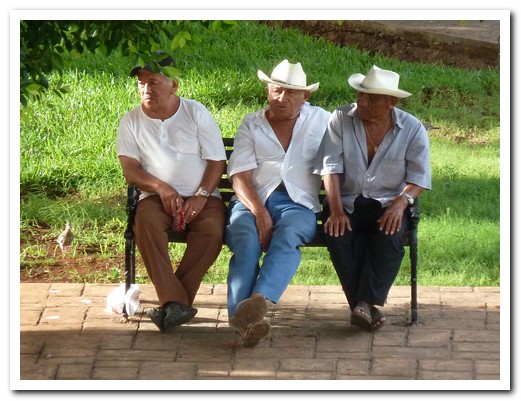
3 amigos in the Plaza

Mérida Cathedral
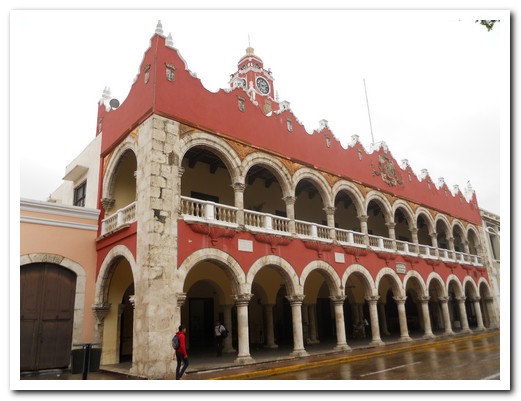
City Hall
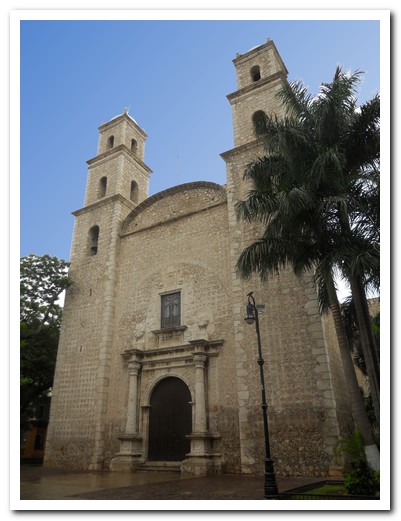
Jesuit Church, once occupied the whole block
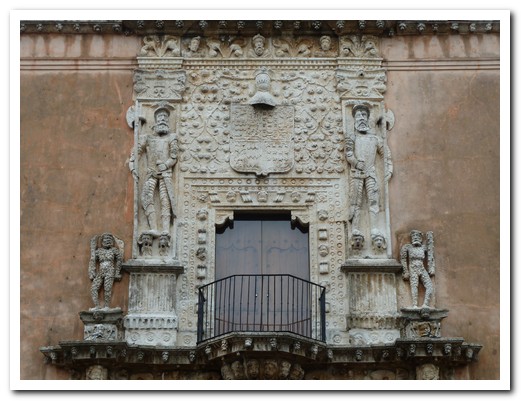
Casa de Montejo (Montejo´s House) shows Conquistadores standing on Indian´s heads

Part of the same doorway

One of the 19 th century mansions

Uxmal site
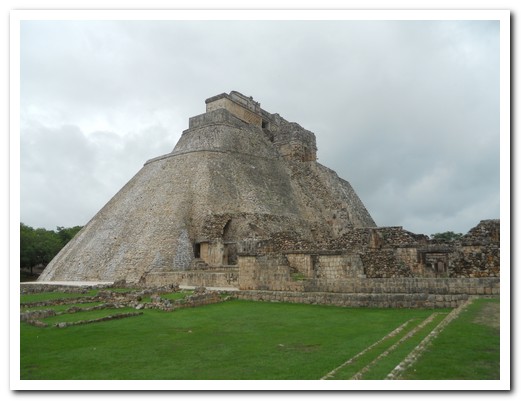
Pyramid at Uxmal

Part of the pyramid stairway

Ball court with stone hoop still intact

The longest Mayan structure, called Governor´s Palace by the Spanish
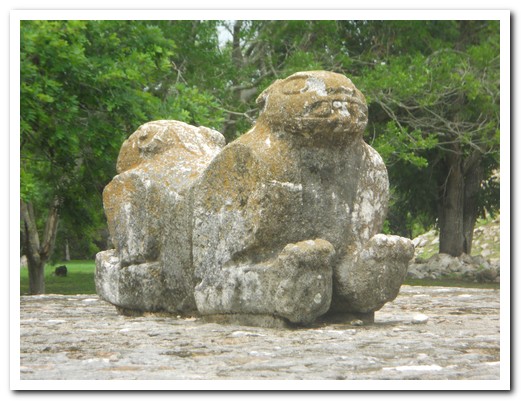
Throne

Detail of carvings
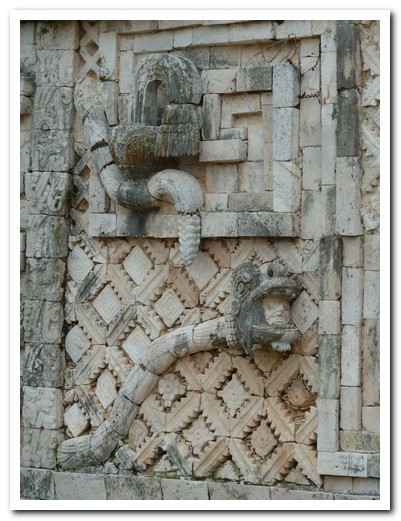
Snake - note human head in its mouth
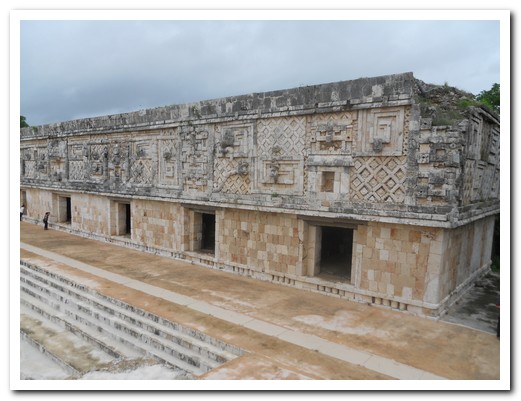
Structure
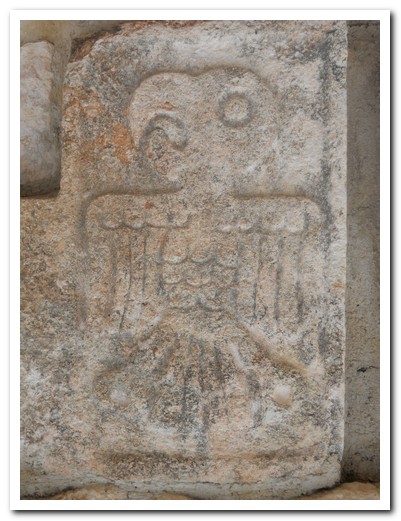
Eagle
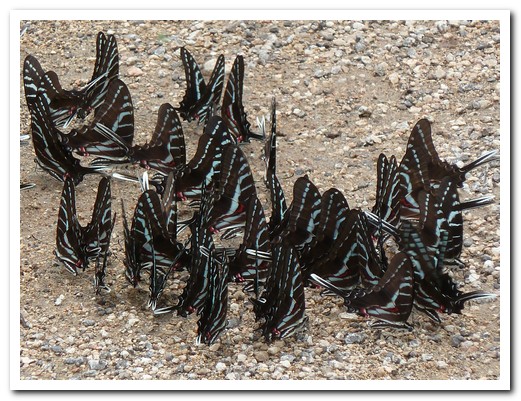
Butterflies feeding